Teaching comprehension isn’t just about employing strategies—it’s about building a deeper understanding of texts through practical tools that work for all students. The Text Application phase of our 3-part Whole Group Lesson offers a clear framework for effective instruction by focusing on essential elements like:
- Background knowledge
- Vocabulary
- Syntax
- Text structure
- Writing about reading
By aligning instruction to the Science of Reading, this framework ensures comprehension is the outcome, equipping students to confidently engage with and apply what they’ve read.
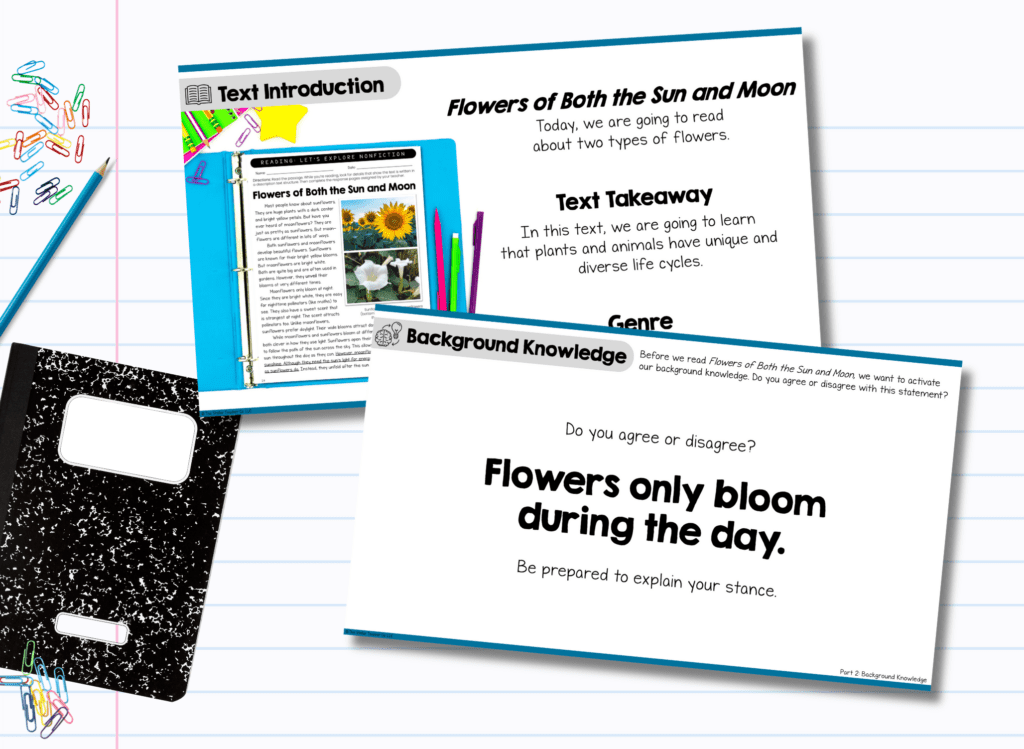
Activating Background Knowledge
Before diving into a text, it is essential to help students connect new ideas to what they already know. This foundational step is crucial for building comprehension and preparing them to navigate complex ideas.
Here are practical tools to support comprehension:
- Use an image related to the text and ask students to describe details they notice, fostering observation and connection.
- Facilitate agree/disagree discussions on themes to spark curiosity and build a foundation for deeper engagement.
- Create a thought web to activate prior knowledge, linking familiar concepts to new material.
By helping students access their background knowledge, you lay the groundwork for understanding the text’s content and themes.
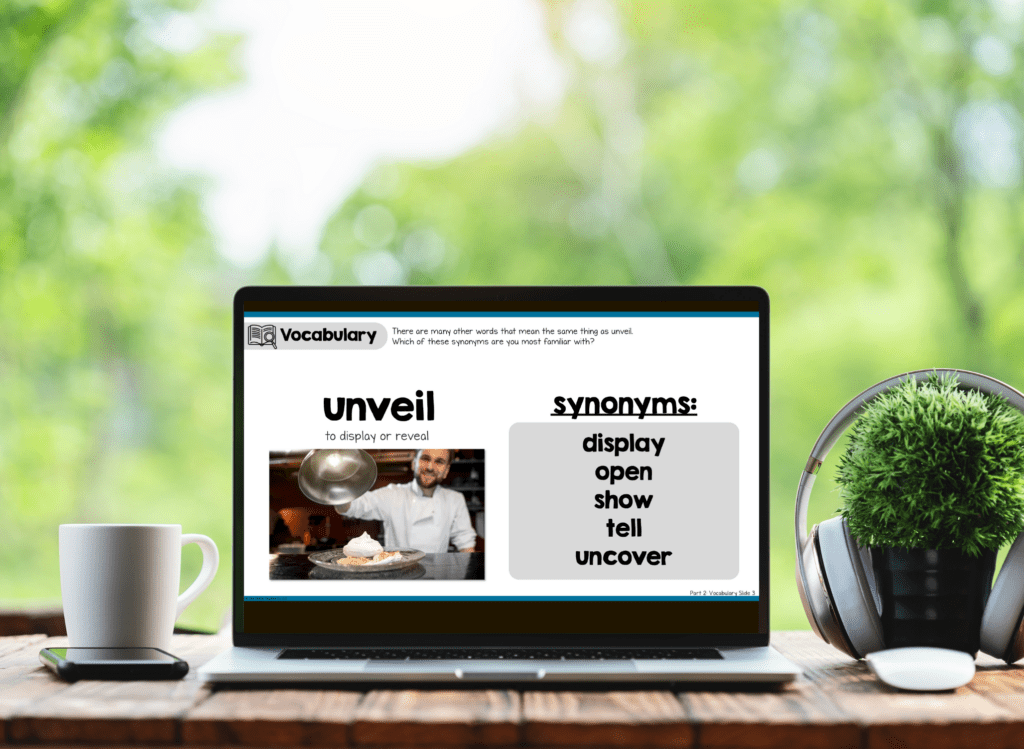
Building Vocabulary
A solid vocabulary is essential for comprehension. Understanding key terms ensures students have the language needed to interpret and discuss challenging ideas effectively.
For example, take the word repel and break it into morphemes (re + pel). Use slides or guided discussion to explore its meaning, synonyms, and usage:
- Share sentences that use repel in different contexts.
- Encourage creative application by asking, “If you had the power to repel something, what would it be?”
- Discuss images related to the vocabulary word to help solidify understanding.
This explicit vocabulary instruction is a practical way to align instruction to the Science of Reading, giving students the tools to grasp deeper meanings in the text.
Using Text Structure as a Roadmap
Recognizing text structure helps students navigate and organize information, moving beyond strategies into deeper comprehension. Introduce text structure with tools like anchor charts or genre previews to guide students in identifying patterns, such as cause-and-effect or problem-and-solution. This clear framework for effective instruction empowers students to predict and analyze content as they read.
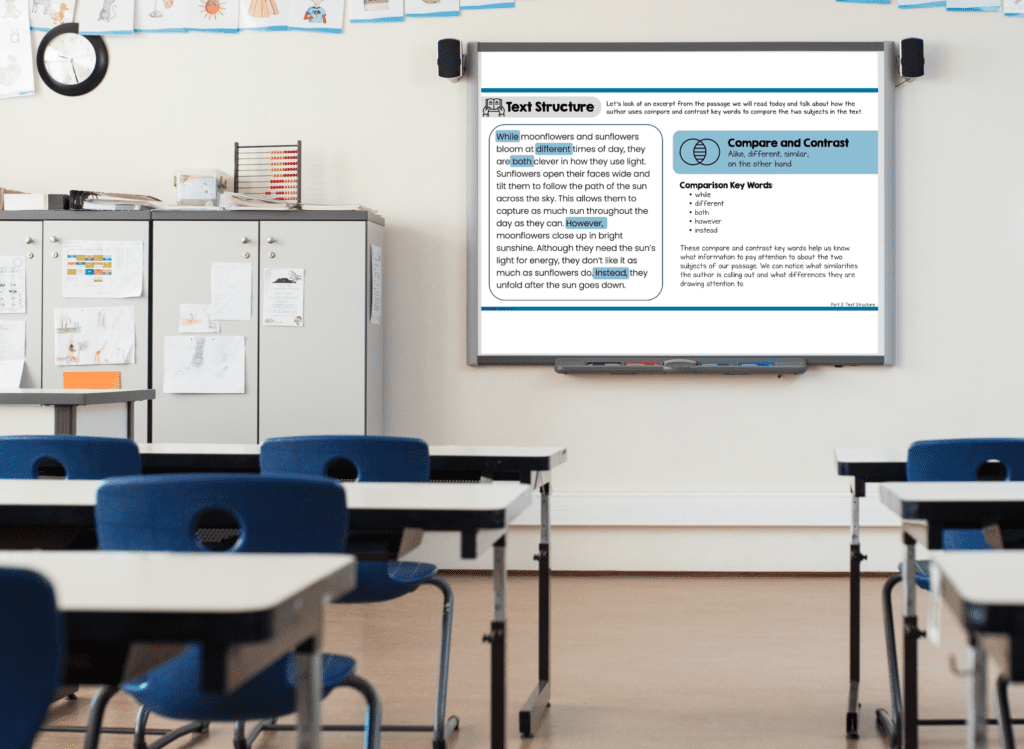
Unpacking Syntax to Strengthen Understanding
Syntax, or sentence structure, is an essential part of helping students understand how words work together to convey meaning.
- Start by breaking down sentences into smaller parts, like identifying the subject, verb, and object.
- Use color coding or sentence diagrams to visually show how these parts connect.
- Practice rearranging words to create different sentence types, such as simple, compound, and complex sentences.
- Encourage students to write their own sentences using varied structures to enhance their understanding and build their confidence with syntax.
Pro Tip: When teaching syntax, keep your anchor charts simple and focused to avoid overwhelming students. Teach from sentences that are in texts they are reading. But why start from scratch? Join the Stellar Literacy Collective and access ready-made syntax activities and resources designed to make text application easier and more effective for both you and your students!
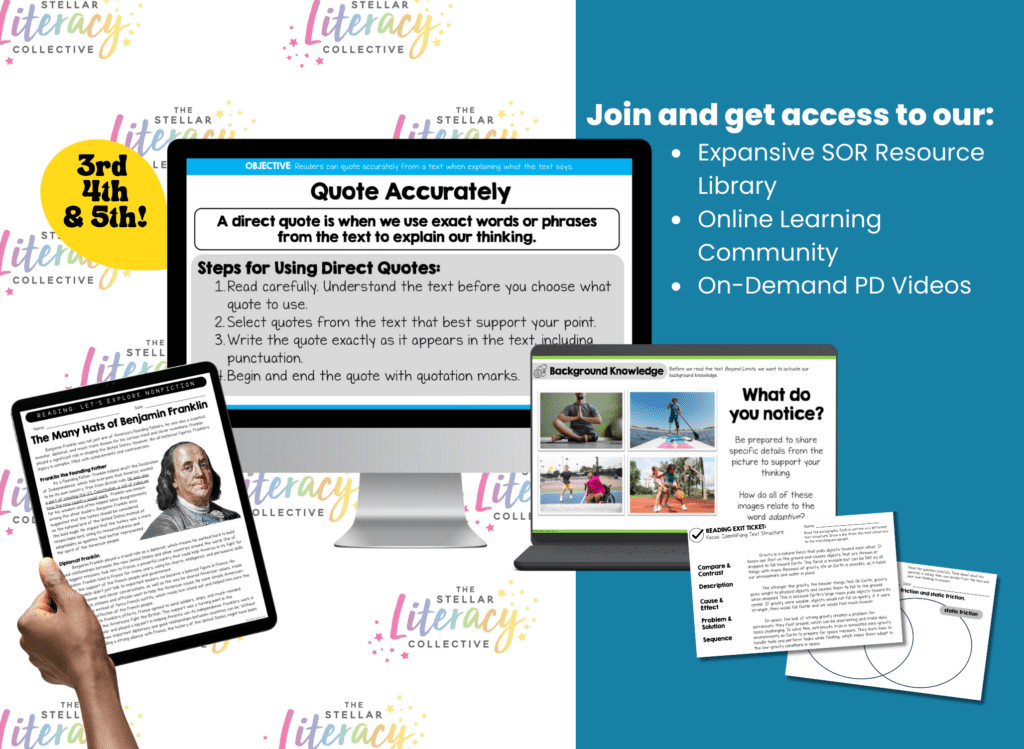
Guiding Thinking with Meaningful Questions
Comprehension grows through thoughtful questioning. Use a variety of question types to help students process and connect ideas:
- Recall: “Who are the main characters?”
- Inferential: “Why do you think the owl helped the hero?”
- Evaluative: “What lesson does the hero learn, and do you agree with it?”
- Applied: “How does this story relate to challenges in your own life?”
By asking these questions, you move beyond strategies and guide students to a deeper understanding of the material by encouraging critical thinking and meaningful connections. These discussions can take place in a variety of formats to meet your students’ needs. You might facilitate a lively whole-group conversation to hear a wide range of ideas, pair students with a partner to share thoughts in a more focused way, or create small groups for collaborative discussions that allow for deeper exploration of the text.
Reinforcing Learning Through Writing
Writing about reading is a powerful tool for teaching comprehension as it encourages students to process, organize, and articulate their understanding of a text. Here are some practical ways to incorporate writing into your literacy block:
- Summarize the Text: Have students write a brief summary focusing on the key points, such as the main idea, important events, or critical details. Using frameworks like Beginning, Middle, and End (BME) helps students organize their thoughts and identify the most important aspects of the story or passage.
- Answer a Question: Pose a comprehension question that requires students to think critically about the text. For example, ask them to explain a character’s motivation, analyze a theme, or connect an event in the story to a real-world situation. This encourages students to use evidence from the text to support their responses.
- Write a Review or Recommendation: Let students share their opinions about the text by writing a review or recommendation. They can explain what they liked or didn’t like and why, using specific examples to back up their perspective. This approach also helps students practice persuasive writing skills.
Incorporating these types of writing activities ensures students engage with texts in different ways, helping them build a deeper understanding while improving their critical thinking and communication skills.
Game-Changing Approaches to Teaching Comprehension
The Text Application framework is more than just strategies—it’s about providing students with practical tools to support comprehension and helping them build a deeper understanding of the text. By focusing on background knowledge, vocabulary, syntax, and text structure within a clear framework for effective instruction, you can align your teaching to the Science of Reading and ensure that comprehension is the natural result.
With these tools, you’re not just teaching students to read—you’re empowering them to think critically, engage deeply, and make meaningful connections with the material.
Think about your next steps…
- Challenge: This week, try incorporating a writing prompt into your text application phase. Have your students write a short summary of the text or answer a question that requires text evidence. Notice how this activity helps solidify their understanding while giving them a chance to practice organizing their thoughts.
- Check out Episode #197 of the The Stellar Teacher Podcast to dive into the benefits of activating prior knowledge—what we like to call “mental velcro”—can help new concepts from texts stick, boosting students’ understanding and retention!
- Take Action! Join us inside The Stellar Literacy Collective, where you will get access to a resource library filled with reading and writing resources that will help support you and your students get the most out of your literacy block – including 3rd, 4th, and 5th Grade Whole Group Lessons that follow this standards-aligned framework!
Happy Teaching!


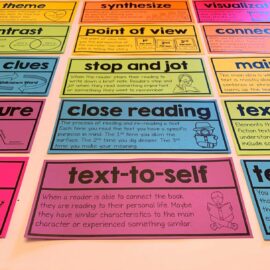
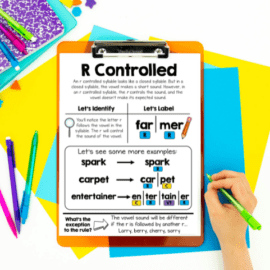
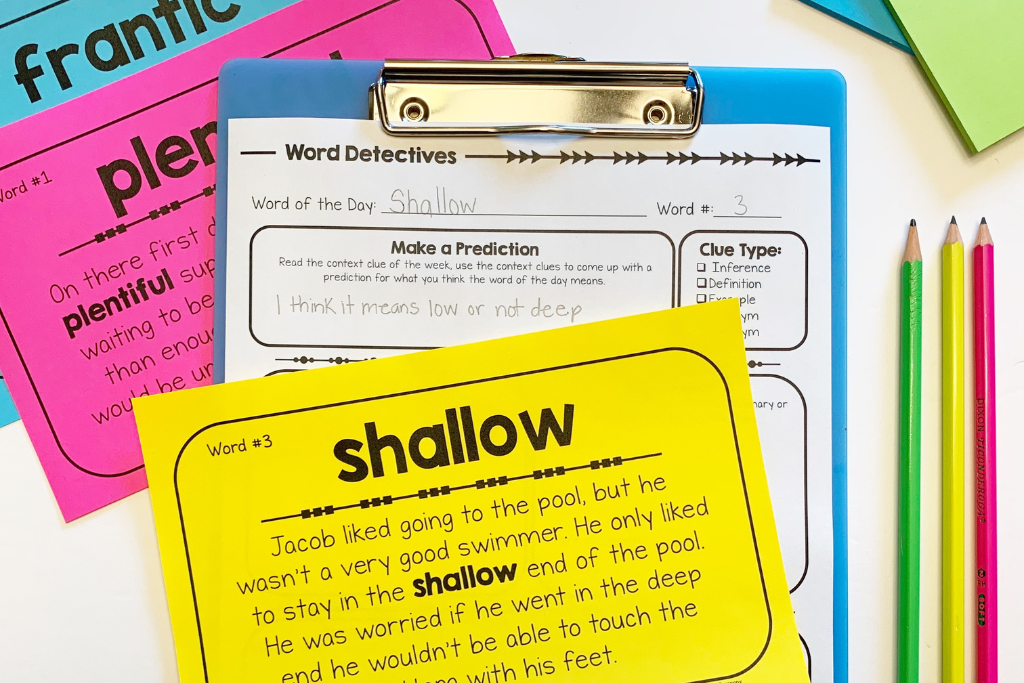
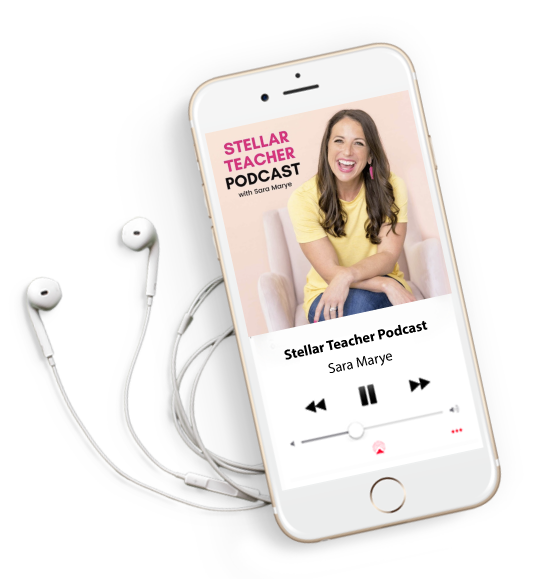





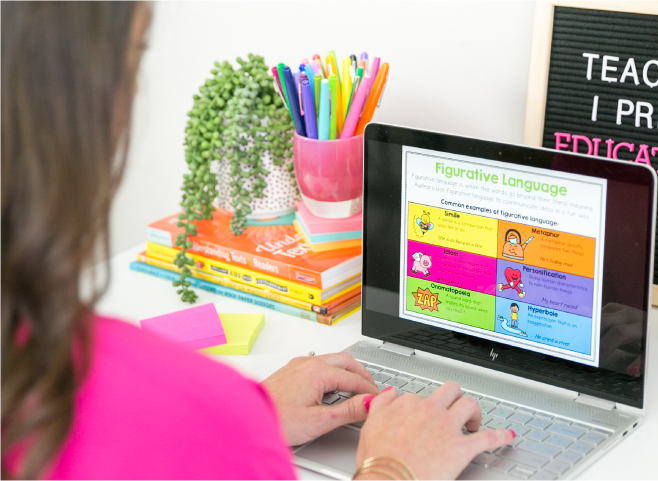

Leave a Comment
You must be logged in to post a comment.